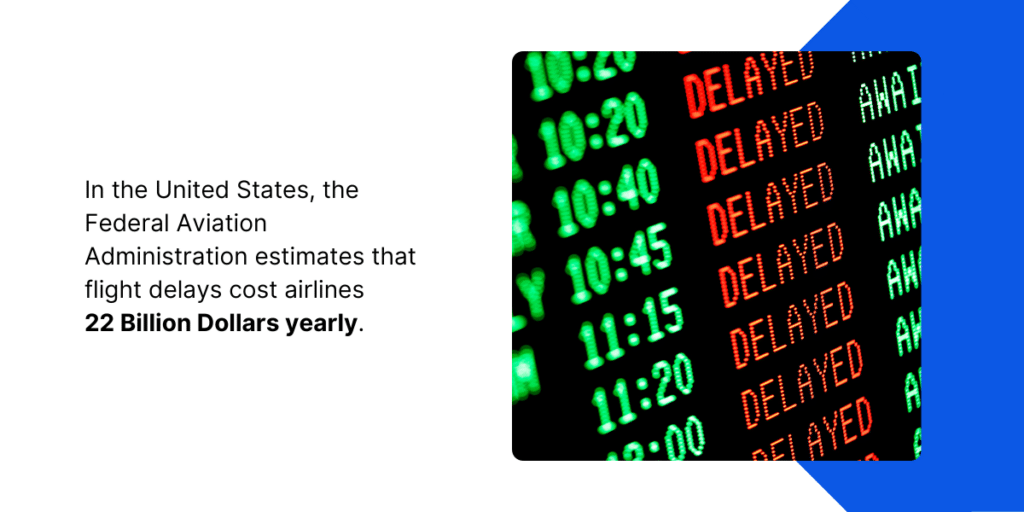Flight delays are more than just an inconvenience—they’re a multimillion-dollar problem that impacts airlines, airport operators, ground crews, and passengers alike. In an industry where timing is everything, operational disruptions can snowball quickly, affecting not only the day’s schedule but also future connections and customer loyalty.
While weather and mechanical issues are often blamed, many delays stem from labor mismanagement and inefficient communication. This is where aviation scheduling software makes a difference—aligning staff with real-time needs to maintain on-time performance and minimize disruption.
The Cost of Delays in the Aviation Industry
Every minute a plane sits on the tarmac costs money. Airlines incur additional fuel charges, gate occupancy fees, crew overtime, and compensation for affected passengers. Airports experience a ripple effect as delayed departures cause congestion and disrupt tightly coordinated schedules.
The reputational damage is equally significant. Frequent delays erode customer trust, driving travelers toward more reliable competitors. Additionally, regulatory agencies closely monitor performance metrics, and consistently poor results can trigger penalties or reduced flight slots.
These impacts highlight the urgent need for smarter workforce coordination—something aviation scheduling software is purpose-built to solve.
Common Causes of Delays
Although external factors like storms and technical issues are outside an operator’s control, many avoidable delays are caused by labor issues. Unplanned absences, fatigue violations, and poor shift alignment can lead to flight cancellations or last-minute crew reassignments.
Legacy scheduling tools simply can’t keep pace with the dynamic, fast-moving demands of aviation. Miscommunication between operations teams and staff can result in gate agents or baggage handlers being in the wrong place at the wrong time. Additionally, noncompliance with regulatory mandates around rest periods can delay crew availability and limit flight options.
These inefficiencies compound quickly, creating a domino effect that disrupts the broader aviation ecosystem.

How Aviation Scheduling Software Addresses These Challenges
Modern aviation scheduling software introduces automation, intelligence, and real-time visibility to replace reactive, fragmented processes. Legacy scheduling tools—often spreadsheets or static systems—lack the agility to manage the fluid demands of air travel. In contrast, dynamic scheduling solutions anticipate change and respond in real time, eliminating friction and improving operational resilience.
Real-Time Scheduling and Automated Adjustments
In the aviation industry, disruptions can happen with little notice—crew call-offs, flight delays, equipment malfunctions, or weather rerouting. With manual processes, responding to these challenges involves a time-consuming sequence of calls, approvals, and last-minute scrambling.
Intelligent automation identifies available, qualified personnel and reassigns them instantly—avoiding delays before they escalate. This ensures that gates are manned, baggage is loaded, and safety checks are conducted—without delay. Automation reduces response time from hours to seconds, keeping flights on track even during unforeseen disruptions.
Centralized Visibility and Communication
Disjointed communication between departments—flight operations, gate agents, ramp crews, and maintenance—is a common root cause of delay. When teams operate in silos, critical updates can be missed or misunderstood.
Aviation scheduling software serves as a centralized platform where all stakeholders have access to up-to-date workforce and shift information. Changes trigger real-time alerts to all relevant staff—keeping everyone aligned and informed. This shared visibility enables proactive decision-making and promotes a synchronized, collaborative operational environment.
Compliance and Fatigue Management
The aviation industry is highly regulated, with strict compliance guidelines on maximum duty hours, mandatory rest periods, and certification requirements. Noncompliance can lead to penalties—or worse, compromised safety.
Aviation scheduling software automatically enforces compliance rules at every stage of the scheduling process. The system checks for regulatory, union, and internal policy violations before a schedule is finalized, reducing legal exposure and safeguarding employee well-being. Built-in fatigue management features alert planners when schedules approach unsafe limits, ensuring that only rested, qualified personnel are assigned to duty.
Demand-Driven Labor Optimization
Air travel is subject to frequent fluctuations in passenger volume, weather patterns, and flight loads. Staffing static schedules in this environment leads to inefficiencies: overstaffing during quiet hours or critical shortages during peak periods.
Aviation scheduling software leverages historical trends, real-time data, and forecast modeling to anticipate labor demand. From holiday peaks to weather-related delays, the system adjusts staffing in real time—ensuring optimal coverage without overspending. This proactive approach improves labor utilization, reduces unnecessary overtime, and helps avoid service gaps.
Benefits of Implementing Aviation Scheduling Software
Implementing aviation scheduling software is more than a tech upgrade—it’s a strategic transformation. By aligning labor planning with operational needs, aviation organizations experience tangible improvements across every metric that matters.
- Fewer disruptions caused by labor shortages or noncompliance.
- Faster, more informed decisions thanks to real-time data access.
- Happier employees through fair, transparent, and flexible scheduling.
- Improved ROI from fewer overtime hours and minimized downtime.
- Better customer experience, resulting in higher retention and satisfaction.
When every team operates from a single, intelligent system, the entire operation becomes more agile. From check-in to takeoff, aviation scheduling software ensures that every part of the process runs with precision—and that delays are the exception, not the rule.

Why Indeavor?
Indeavor’s Aviation scheduling software stands out with its secure, cloud-based infrastructure and easy-to-use mobile interface. From airside operations to terminal staff, Indeavor provides a centralized platform for workforce planning, scheduling, and compliance management.
The solution integrates seamlessly with flight operations systems, providing a real-time link between flight schedules and workforce availability. Whether you’re dealing with sudden call-offs, union rule complexities, or daily scheduling demands, Indeavor offers scalable, automated support to keep your operation moving forward.
With built-in fatigue management, role-based scheduling, and proactive alerting, Indeavor helps you maintain compliance while avoiding the staffing missteps that lead to costly delays.
Conclusion
Aviation is a high-stakes industry where timing and coordination are paramount. Delays not only hurt the bottom line—they erode customer trust and compromise safety. As operators look to reduce inefficiencies, aviation scheduling software becomes a non-negotiable asset.
By automating labor deployment, enhancing visibility, and ensuring regulatory compliance, the right solution can significantly reduce delays and increase operational resilience.
Ready to optimize your workforce and improve on-time performance? Learn how Indeavor’s scheduling and workforce management software can help you take control of the skies.
About the Author
Claire Pieper is the Digital Marketing Specialist for Indeavor. In her role, she specializes in crafting
strategic and engaging content, ensuring that customers are well-informed. Claire is dedicated to
enhancing the customer experience and optimizing the user journey through Indeavor’s solutions. To
learn more or get in touch, connect with Claire on LinkedIn.



